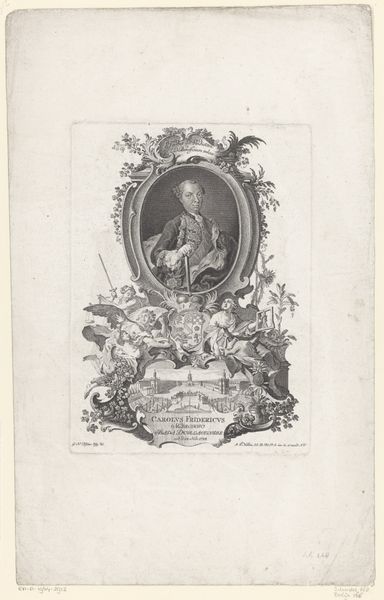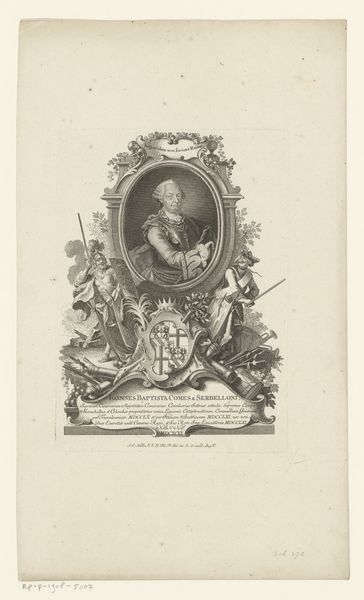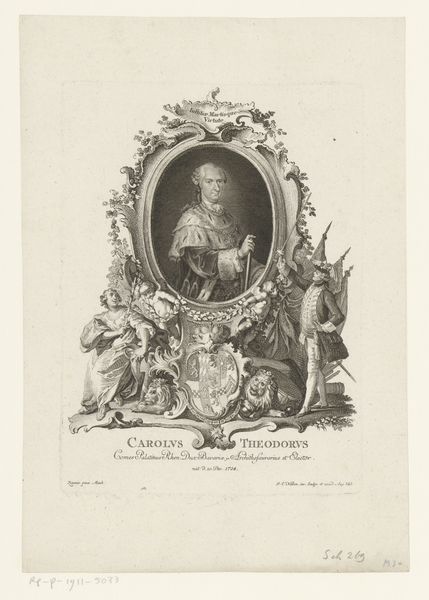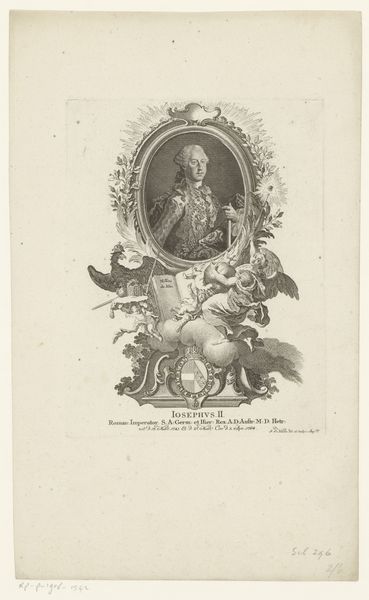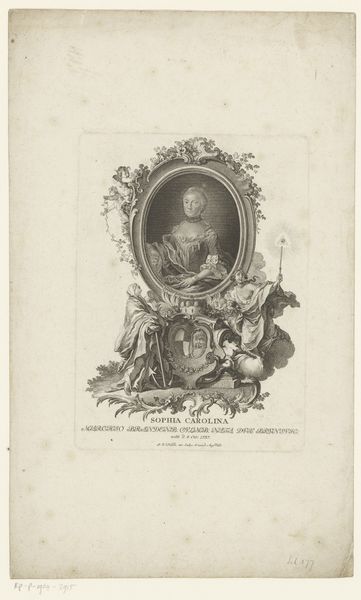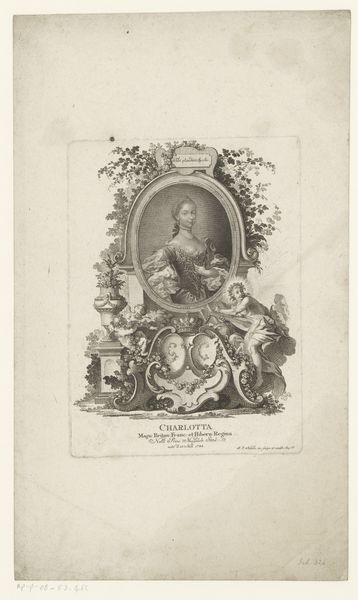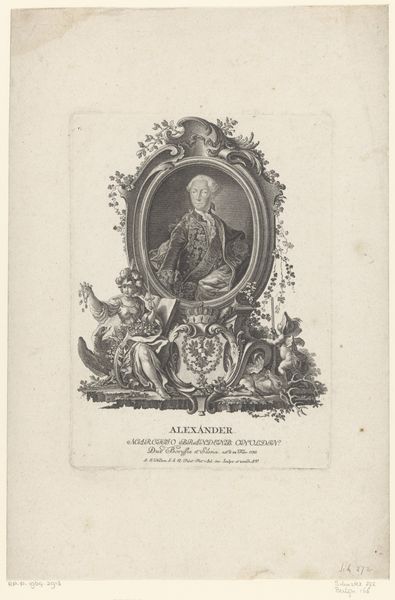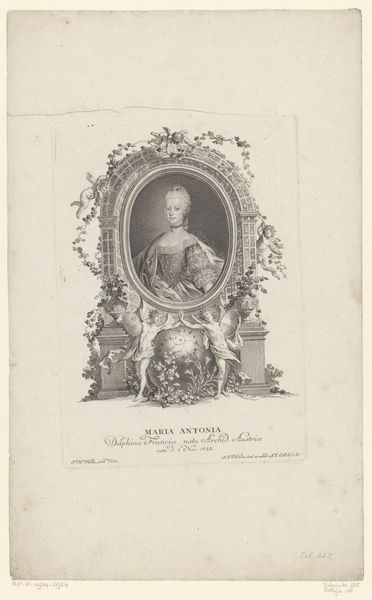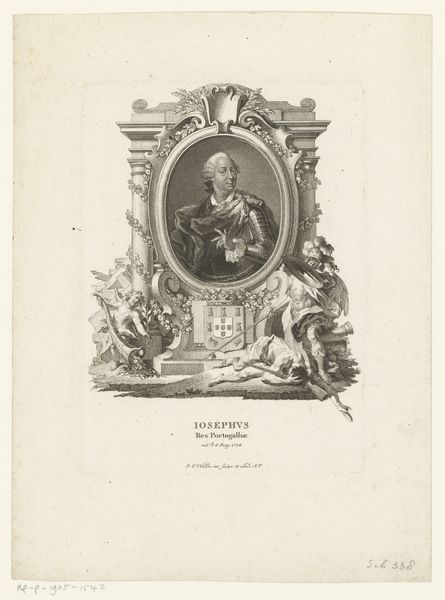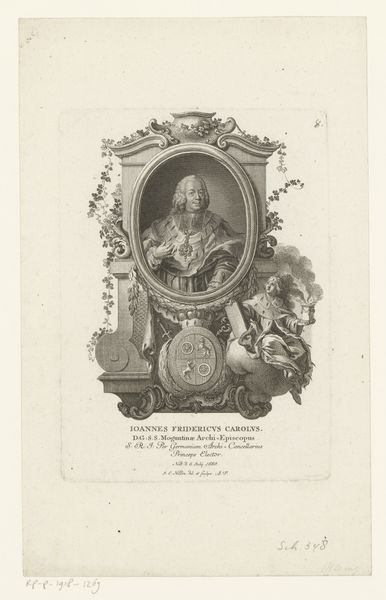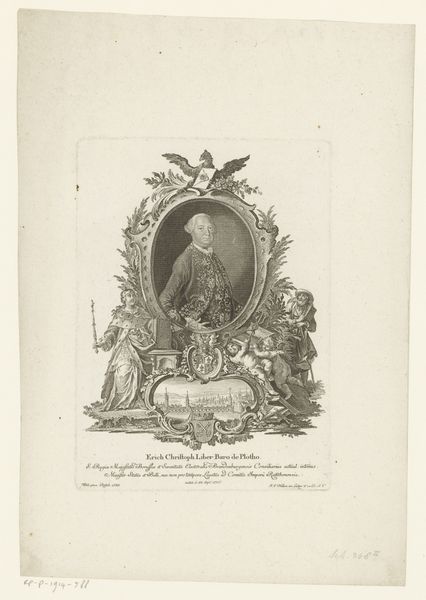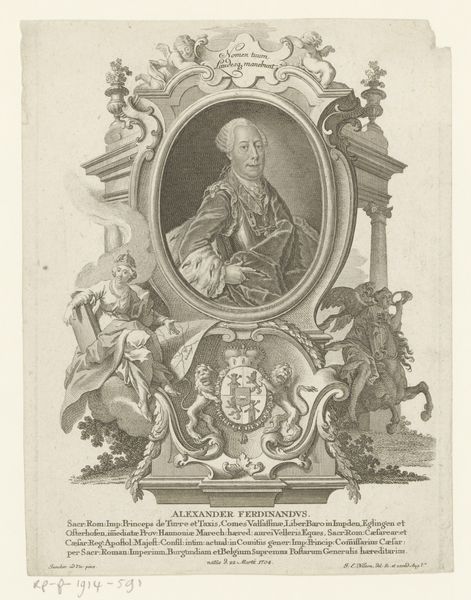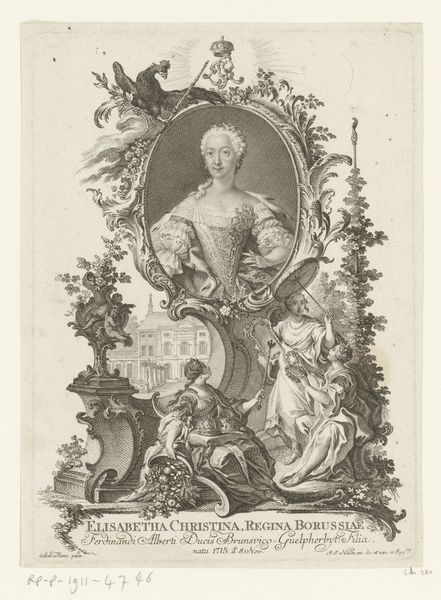
Dimensions: height 220 mm, width 160 mm
Copyright: Rijks Museum: Open Domain
Editor: So, here we have Johann Esaias Nilson's print, "Portret van Maria Josepha van Beieren," created between 1765 and 1788. It's an engraving, quite ornate, and I’m immediately struck by its rigid formality. How do you interpret this work within its historical context? Curator: It's vital to see this print as more than just a pretty picture. The rigid formality you noticed is intentional. How does this representation of Maria Josepha contribute to the construction and reinforcement of power structures, especially considering her role as Roman Empress? Editor: That’s interesting! I hadn't thought about the power dynamics so explicitly. Curator: Consider the visual language being used here. The elaborate frame, the figures flanking her portrait – these elements are loaded with symbolism. How might they reflect or even shape the perception of Maria Josepha's identity and her place within the imperial system? Does it allow her any individual agency, or is she merely a symbol? Editor: It feels like she's being presented as a figurehead more than an individual, almost like she's an emblem or a symbol, especially framed by those figures who seem like Roman gods or heroes. Does the Baroque style itself serve to amplify this effect of projecting power and status? Curator: Absolutely! Baroque, with its emphasis on grandeur and drama, was often employed to legitimize authority. By understanding the political function of art like this, we can see how representations like these have real effects on how people view power, gender and even history. And thinking critically about how images communicate becomes more vital in today's world of image saturation. Editor: Wow, I see it now! Looking beyond just the aesthetics really opens up a whole new dimension to understanding the work. I'll definitely consider these sociopolitical perspectives in my future analysis. Curator: Exactly! It's about engaging with art as a reflection of the world that created it and the worlds it, in turn, creates. This portrait isn't just about Maria Josepha; it's about the whole system that elevated her and the many others that it trampled on.
Comments
No comments
Be the first to comment and join the conversation on the ultimate creative platform.
